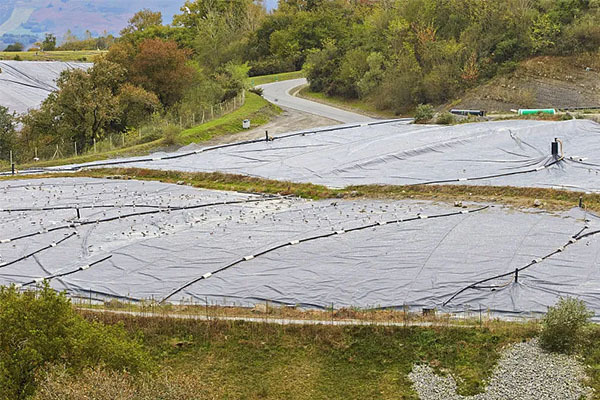Unveiling the Versatility of Geomembrane Roll: The Unsung Hero in Construction
Release time:
2025-06-27
Discover the benefits and applications of geomembrane rolls in construction and environmental projects.
What is a Geomembrane Roll?
Ah, the geomembrane roll! This unassuming yet vital product is a flexible barrier widely used in various construction and environmental applications. Imagine being the quiet backbone of a project, working tirelessly behind the scenes—this is what a geomembrane roll does!
Why Use Geomembrane Rolls?
Now, you might be wondering, "Why should I care about a geomembrane roll?" Well, let’s break it down. These rolls are primarily designed to control fluid migration in a human-made project. Whether it’s for landfill liners, pond liners, or even aquaculture systems, these rolls come to the rescue!
Key Benefits
- Durability: Made from high-density polyethylene (HDPE) or low-density polyethylene (LDPE), they can withstand harsh conditions.
- Cost-Effective: Using a geomembrane roll can save you a bundle in labor and material costs.
- Environmental Protection: These barriers help to prevent contaminants from leaching into the soil and groundwater.
- Easy Installation: They’re lightweight and flexible, making them a breeze to install compared to traditional methods.
Applications Galore!
So, where do you find these geomembrane rolls in action? Let’s take a quick tour of their applications:
1. Landfills
Landfills are notorious for leaching harmful substances. By lining them with geomembrane rolls, you can effectively minimize this risk. It’s like putting a protective layer between waste and the environment!
2. Pond Liners
If you’re setting up a pond for aquaculture or irrigation, geomembrane rolls are your go-to solution. They hold water beautifully, ensuring minimal evaporation and leakage.
3. Mining Projects
In the mining industry, these rolls serve as containment solutions to prevent hazardous chemicals from contaminating nearby water sources. Talk about being a hero!
Choosing the Right Geomembrane Roll
Alright, so you’re sold on the idea. Now what? Choosing the right geomembrane roll can feel a bit overwhelming, but fear not! Here are a few tips:
- Thickness: Depending on your project, the thickness can vary. Thicker rolls tend to be more durable but may come with a heftier price tag.
- Material: HDPE is great for chemical resistance, while LDPE is more flexible. Pick what suits your needs!
- UV Resistance: If your project is outdoors, ensure the roll is UV resistant to prolong its lifespan.
Installation Tips
Before you start rolling out those geomembrane rolls, here are some quick tips:
- Ensure the ground is prepared properly—no sharp objects or debris!
- Use appropriate adhesive or mechanical methods to secure the rolls at seams and edges.
- Test for leaks—better safe than sorry!
The Future of Geomembrane Rolls
As we dive deeper into sustainability, geomembrane rolls are becoming increasingly important. Innovations in materials and designs are paving the way for even more effective solutions. Plus, with the rise of environmental regulations, demand for these products is only going to grow.
Final Thoughts
So there you have it! The geomembrane roll is not just another construction material; it’s a game-changer. With its myriad benefits and applications, it’s high time we give it the recognition it deserves. Whether you’re a contractor, environmentalist, or just someone curious about construction, understanding geomembrane rolls can be incredibly valuable.
Now, go ahead and roll with it!
Previous Page






